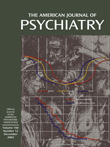Does literature have a moral value? If so, where does that value reside? Under the regime of the revolutionary ayatollahs in Iran, Azar Nafisi and her students answered these questions in practice. The outline of Nafisi’s story is widely known, thanks to her appearances on public radio. A literature professor and Nabokov scholar, Nafisi resigned or was fired from several universities for refusing to wear the veil. In the mid-1990s, she opened her apartment in Tehran to seven of her female students for a fiction study group held in secret. The key texts included Nabokov’s Invitation to a Beheading and Lolita—although the reading extended to novels by F. Scott Fitzgerald, Henry James, and Jane Austen.
The relevance of Nabokov’s Invitation is obvious. The book is a dystopian fantasy. The text lays bare the frailty and absurdity of the forces of evil while it celebrates the nobility of refusal in the face of coercion. Even Lolita has its straightforward uses. Nafisi gives the book an odd reading, one in which Humbert Humbert’s obsessions are stripped of any charm. His young captive’s courage comes to the fore—so that Lolita can be understood as an account of psychological victory over systematic abuse.
But even as she offers it, Nafisi pulls back from this heavy-handed application of literature. The Islamic Republic of Iran maintained its hegemony through the repression of women, but, she says, “We were not Lolita, the Ayatollah was not Humbert and this republic was not what Humbert called his princedom by the sea.” The novel goes against the grain of oppression for reasons intrinsic to the book’s composition: its language and its vision, as exemplified even in simple descriptive passages. What the ayatollahs and their minions cannot permit are subtlety, clarity, and exact discrimination. It is subversive merely to indicate that characters have past lives and that a precise depiction of private history might matter. The unique, idiosyncratic consciousness is offensive to tyranny.
Nafisi’s covert seminars lasted about 2 years, ending in 1997, but her account of life in Iran extends back to the 1980s and before. Enacting her brief for individual vision, she uses autobiography to critique politics. The naive hope invested in the overthrow of the Shah, the oversimple faith of intellectuals caught up in anarchism—every aspect of the self-enslavement of a nation—are at once understandable and horrific when illuminated by personal encounters. The victims of the revolution include its early supporters, devout Muslims whose faith was not fanatical enough. Nafisi writes of intimate daily intimidation and humiliation, enforced through the threat and reality of torture. Many of Nafisi’s students have suffered years of previous imprisonment. Women can be arrested for showing a wisp of hair under a shawl; simply being attractive inspires rape by armed guards. Nafisi spends pages on the appearance of women. A glimmer of hope attaches to the way bright clothing emerges in a private room, once the prescribed robes and scarves are removed. The regime maintains its hegemony first through the repression of women.
Each section of the book is linked to an author and Nafisi’s analysis of one or two texts. To construct a portrait of the early years of the revolution, 1979 and 1980, Nafisi focuses on her university class’s debate on the morality of The Great Gatsby. Is it possible to look beyond the scandal of adultery to find virtue in the truth of the novel’s core, “the perishability of dreams once they are transformed into hard reality”? The analogy is to “the terrible, beautiful dream, impossible in its actualization,” of a transformed Iran.
Daisy Miller and Washington Square are touchstones for the Iran-Iraq War, accompanied, as it was, by continuing usurpations of freedom. The villain in Henry James is always the man who fails to evince empathy—who cannot muster the courage to acknowledge the legitimate feelings that move the novels’ heroines. Nafisi links the personal to the political: “Lack of empathy was to my mind the central sin of the regime, from which all the others flowed.” In these circumstances, as in James’s writings, “A hero becomes one who safeguards his or her individual integrity at almost any cost.”
In the extraordinary fourth section of her memoir, Nafisi takes a direct look at the romantic lives of young women in the Islamic Republic. The delicate negotiations in Pride and Prejudice stand in contrast. Nafisi’s late chapters, about the 1990s, are studded with accounts of the murder of intellectuals. Nafisi’s writing does not always embody the virtues it admires; she can be pedestrian and repetitive, and sometimes her descriptions simply lack interest. But Reading Lolita has compensatory strengths, ones often absent in contemporary memoirs. Nafisi is a witness of great events, and her own actions in the face of those events are exemplary. In her teaching, Nafisi manages to maintain balance and exactness in the face of overwhelming external pressures for simplification.
She serves as an extraordinary mentor, inspiring and justifying loyalty in her students. Her book is enlarged by personal courage, hers and her students’, that mirrors the attitude of the fictional protagonists Nafisi admires. Effectively, Reading Lolita demonstrates that there is not a single pathway to the creation of literature, not a single set of elements. On rare occasions, the moral vision of the author will suffice.

